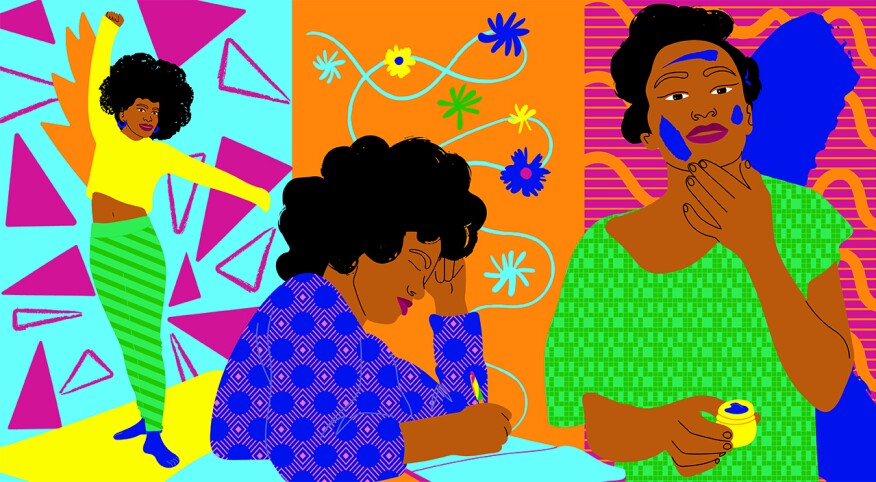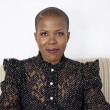I recently visited the Smithsonian’s National Museum of African American History and Culture for the third time with my family. I love that place! Every time I go, I leave feeling inspired, nourished and proud. During this most recent visit, it dawned on me that those feelings are intentional, the result of the careful process of curation – selecting what goes into the space, what gets the most visibility or attention and more importantly what is purposefully left out.
This got me thinking, if museum curators can reproduce a consistent experience for visitors every time, what might be possible if we systematically practiced curation in our personal lives?
If you’re a Black or brown woman, chances are you were taught and socialized to collect, not curate. Collect people, projects (sometimes the people are the projects), things, obligations, responsibilities, etc.
Here are a couple of examples of curation from my own life:
Earlier this year, I canceled my Hulu + Live TV subscription and stopped watching the news. I got tired of the major news networks deciding what was newsworthy and leading me down the path of incessant gloom and doom. Instead, I picked up two newspaper subscriptions so I could decide which news stories were important to me. This was a game changer, shifting from a passive consumer of world events to an active and self-determined one – curation!
Another example: friendships. Close friendships are a staple in my self-care toolkit, but in my four-plus decades of living, I’ve had to walk away from a few. Friendships where the person only wanted to focus on their life problems, was rarely interested in moving towards solutions and left me feeling worse at the conclusion of our visit – curation!
If you’re a Black or brown woman, chances are you were taught and socialized to collect, not curate. Collect people, projects (sometimes the people are the projects), things, obligations, responsibilities, etc. And also taught that doing so defined your value: a good girl, good mother, good friend, good colleague, etc. So the notion of curation may be a foreign one for you and may even conjure up feelings of being selfish. But what no one ever told us was that to be a collector with no curation skills requires us to decenter our own needs, joy and peace, not just sometimes, but all of the time. Kim Fields did a monologue on The Upshaws that illustrates this beautifully and resonated with so many women.
But here’s the good news: It’s never too late to learn how to curate! Below are a few steps to help you on your path of life curation:
Define. The first step is to define your values. Values are so central to who we are. They are the foundation of our definition of happiness (when we live our values, we tend to be happier), our sense of purpose (chances are your belief of what your purpose is aligns with your values) and our mental health (living our values boosts our mental health). Yet, many of us rarely ask ourselves: “What are my values?” Values are core beliefs or characteristics that are central to the way you live. Just like museums have a compass for determining what’s important for the museum’s success to base their curation decisions on, we need a similar guide, and that’s our values.
Align. Once you know your values, look at the various components of your life and assess if they align. You should explore things like: your social media feeds, the TV and movies you consume, relationships, work environment, volunteer activities, etc. Everything needs to be run through the litmus test. Go through each area of your life and put a check mark by the things that currently align with your values and an X by those that don’t.
Related to friendships, an interesting tool introduced in Arthur C. Brooks and Oprah Winfrey’s new book Build the Life You Want: The Art and Science of Getting Happier walks the reader through an exercise of differentiating between “real friends” and “deal friends,” friends based on what the other person can offer. Brooks and Winfrey explain, “If you find that your social life is leaving you feeling a little empty or unfulfilled, it might just be that you have too many deal friends and not enough real friends.” In thinking about the friendships I had to walk away from, it was because they felt transactional and the currency was my emotional labor; I was their (emotional) deal friend. The book suggests making a list of your friends and putting “real” next to those that aren’t transactional and “deal” next to those that are.
Streamline. This is probably the hardest step of curation for most of us, and it entails letting go of some things and deprioritizing others. Your assessment in step two likely highlighted some key people, places and things that don’t align with your values. If so, make a plan to release those things (with compassion of course if a person is involved). An added bonus of releasing the things that don’t align with your values is that it frees up your time and likely reduces your stress as a result. For the things in your life that don’t align with your values that you can’t just eliminate, ask yourself what you can do to mitigate them. Can you self-advocate, minimize interaction or set clear boundaries? Sometimes curation is deemphasizing the attention given to things.
As with most self-improvement processes, curation is a life process that we commit to and practice over time. As we become more adept, we use our values to filter what we even let into our lives. The benefit? Recentering ourselves and hopefully increasing our happiness. And in the words of our beloved Oprah, from her new book, “… happier is not a state of being, but a state of doing – not a thing you wait around and hope for, but an achievable change you actively work toward.”











